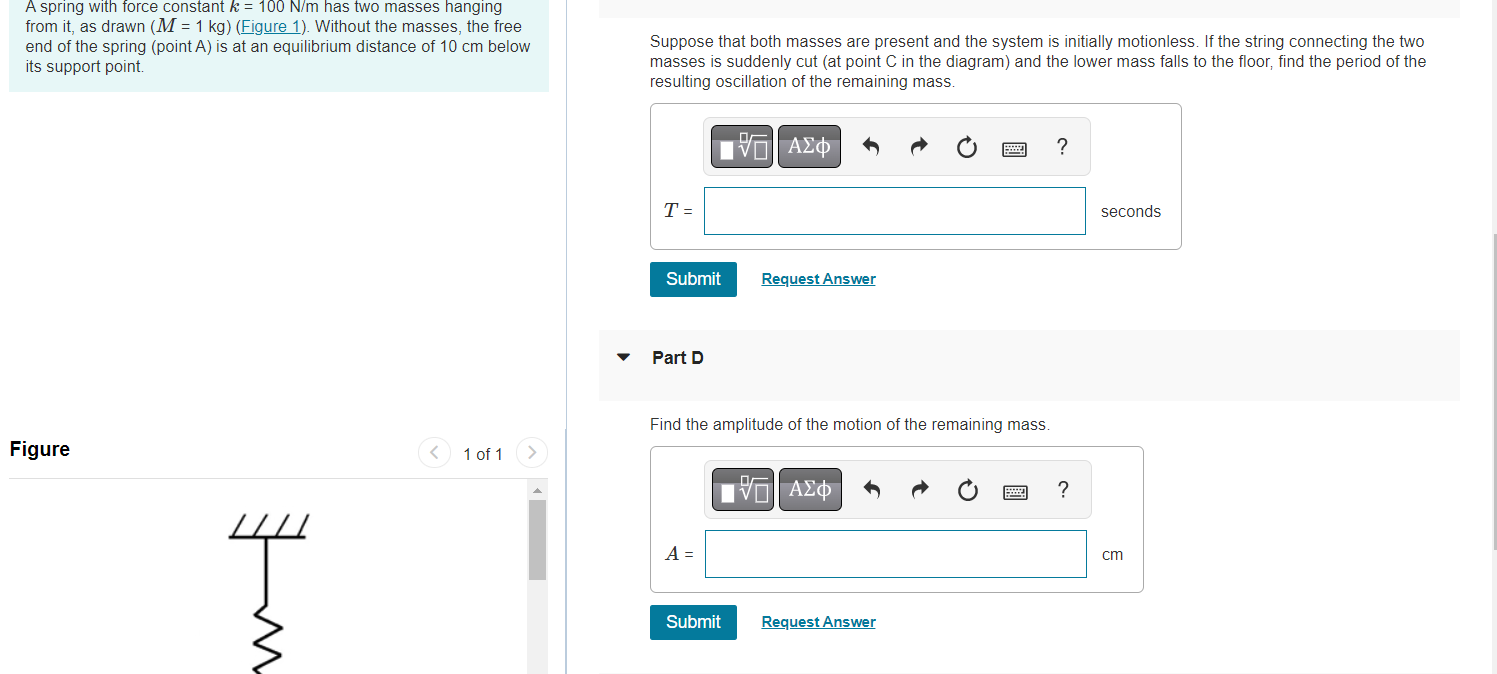Home /
Expert Answers /
Physics /
a-spring-with-force-constant-k-100-mathrm-n-mathrm-m-has-two-masses-hanging-from-it-pa968
(Solved): A spring with force constant \( k=100 \mathrm{~N} / \mathrm{m} \) has two masses hanging from it ...
A spring with force constant \( k=100 \mathrm{~N} / \mathrm{m} \) has two masses hanging from it, as drawn ( \( M=1 \mathrm{~kg} \) ) (Figure 1). Without the masses, the free end of the spring (point A) is at an equilibrium distance of \( 10 \mathrm{~cm} \) below Suppose that both masses are present and the system is initially motionless. If the string connecting the two its support point. masses is suddenly cut (at point \( \mathrm{C} \) in the diagram) and the lower mass falls to the floor, find the period of the resulting oscillation of the remaining mass. Part D Find the amplitude of the motion of the remaining mass.
What is the maximum velocity of the remaining mass during its oscillation?
Expert Answer
consider the given system. Two equal masses are attached together on a string xKMMF=kXF=2MgMF=kxMgX

